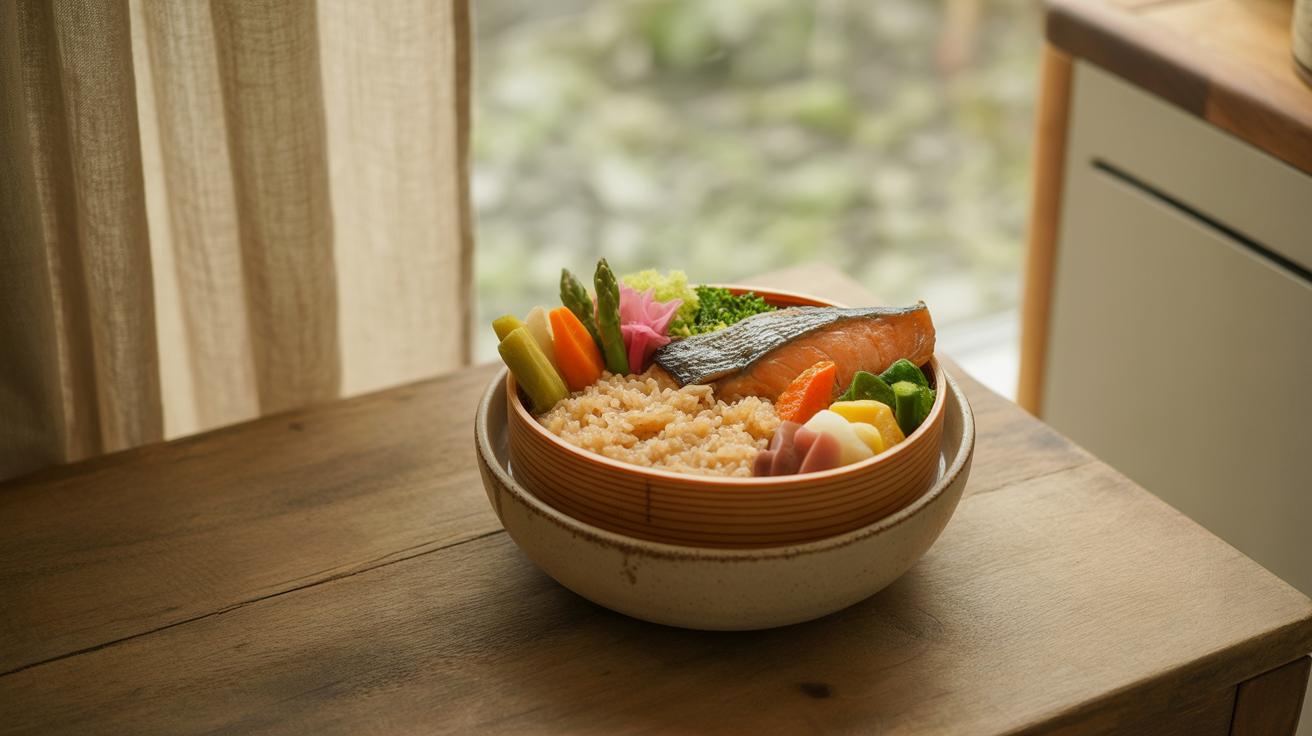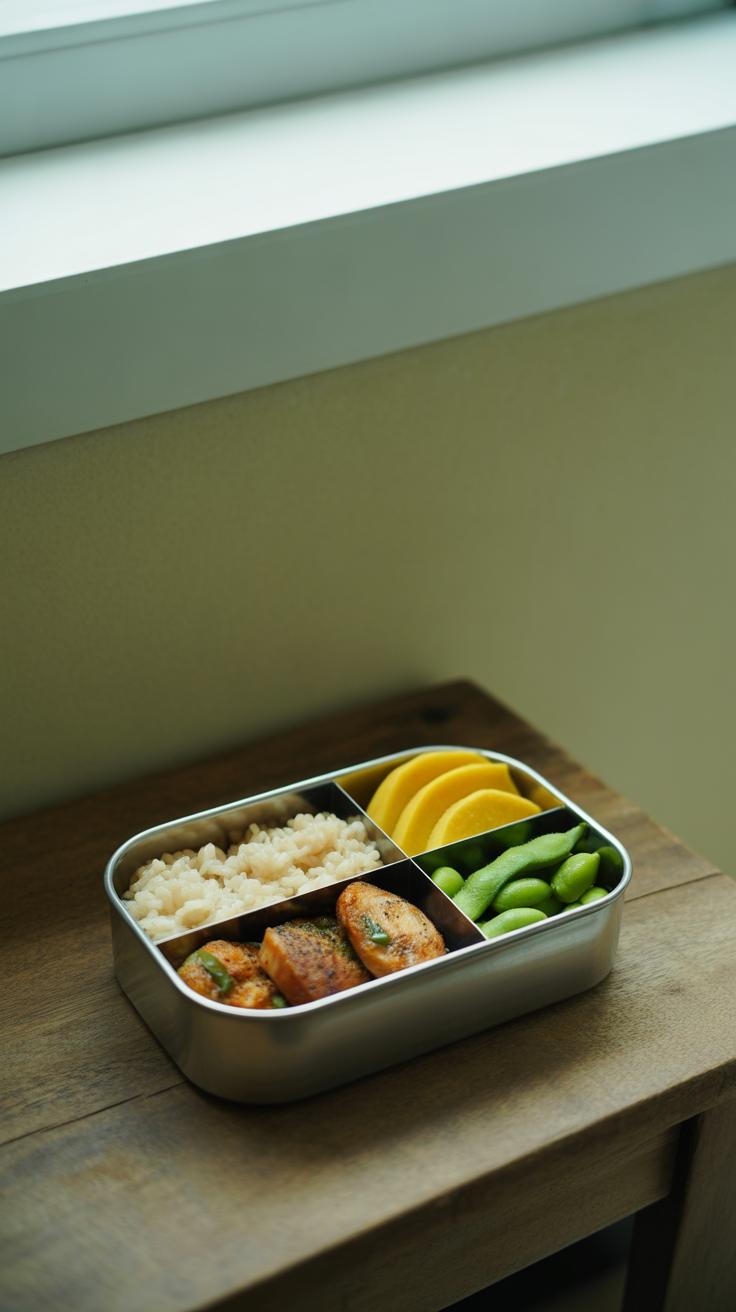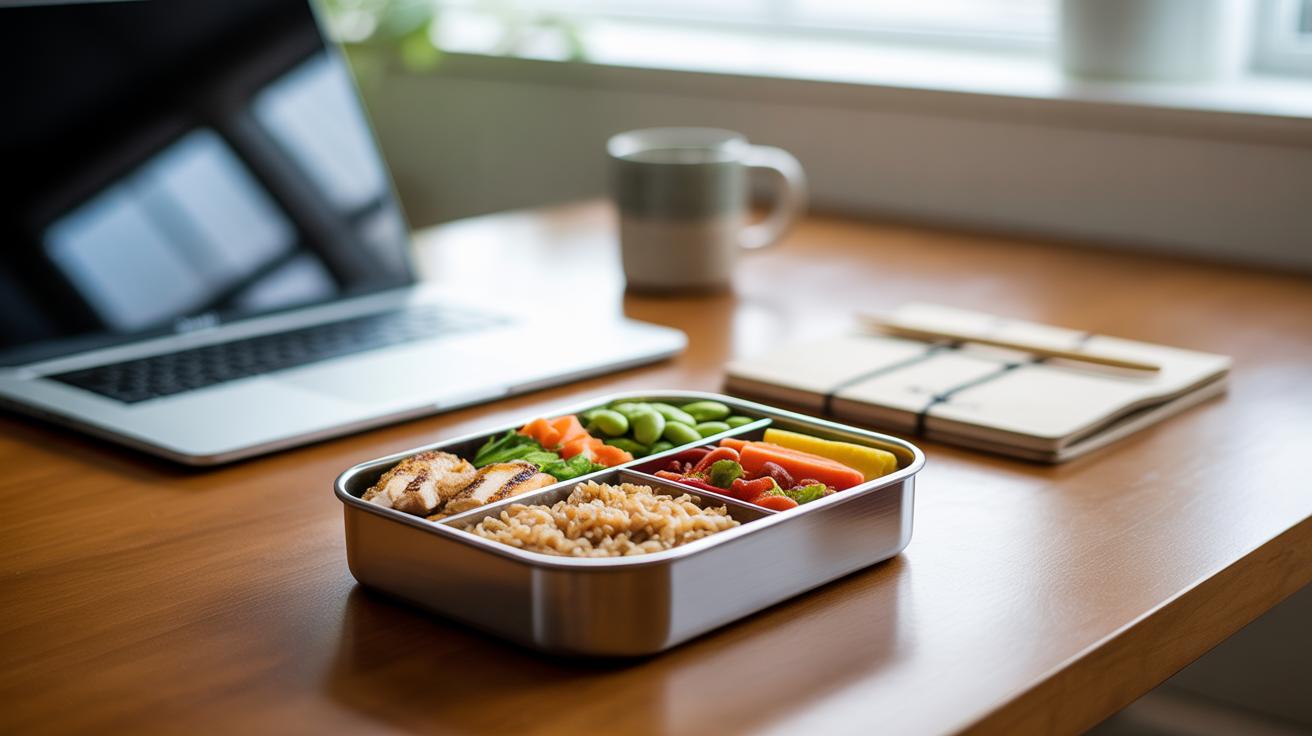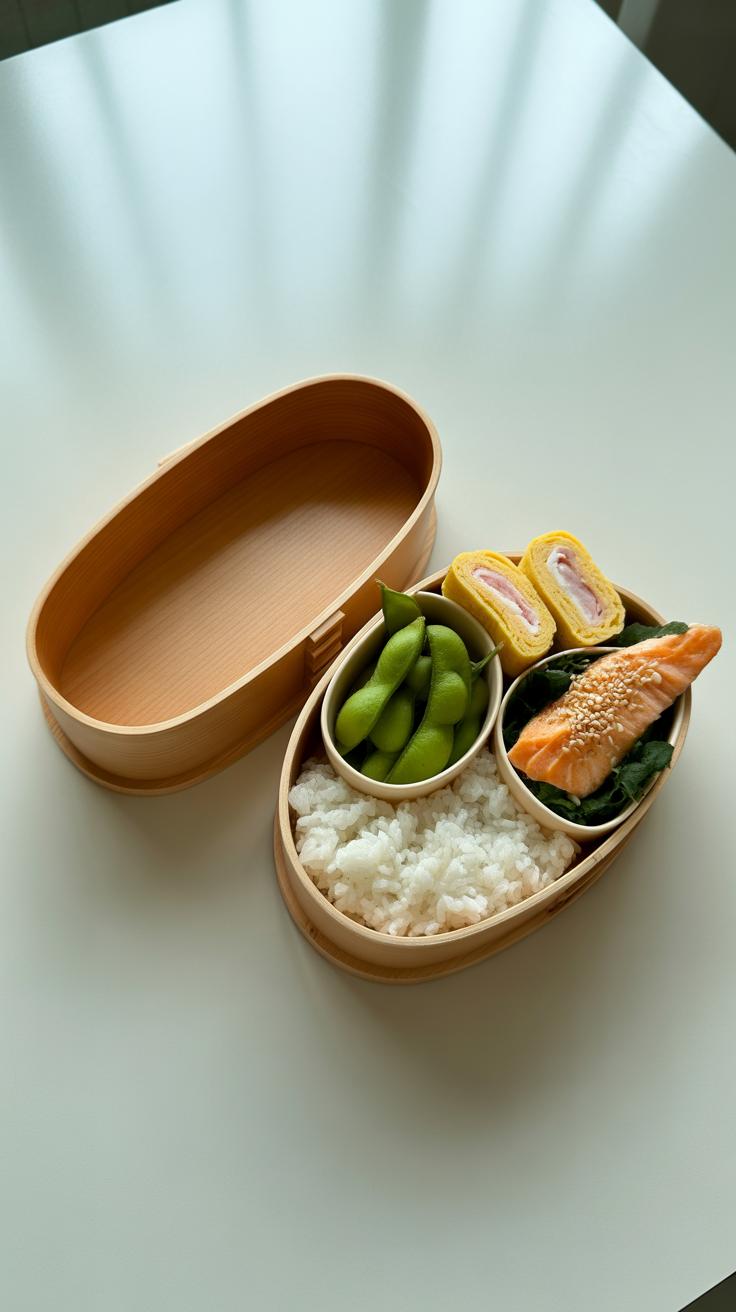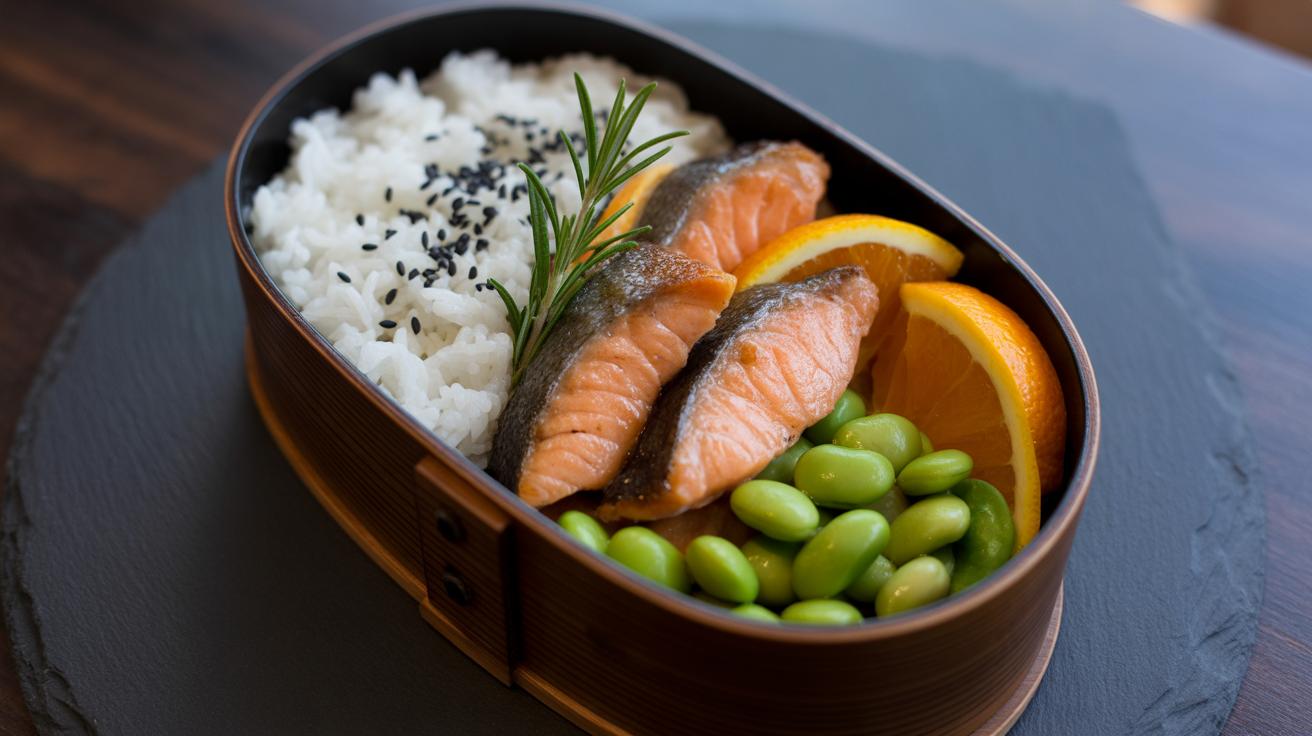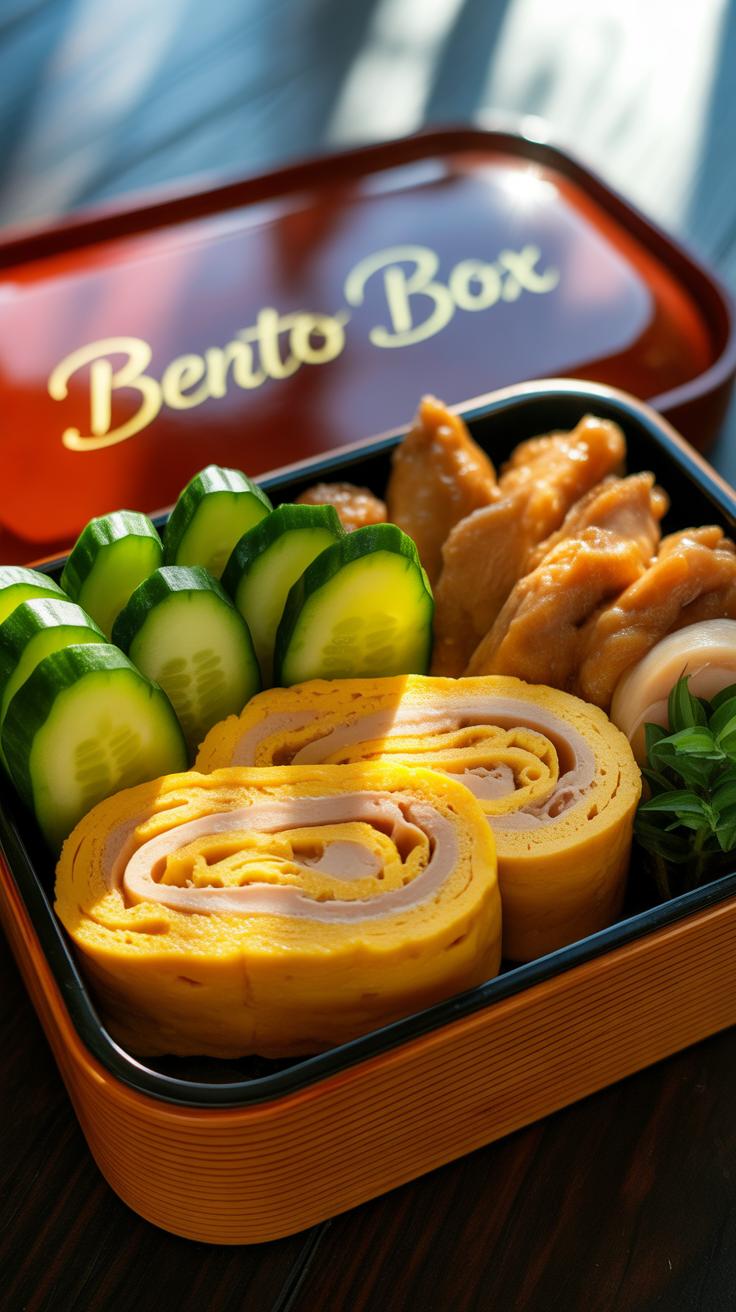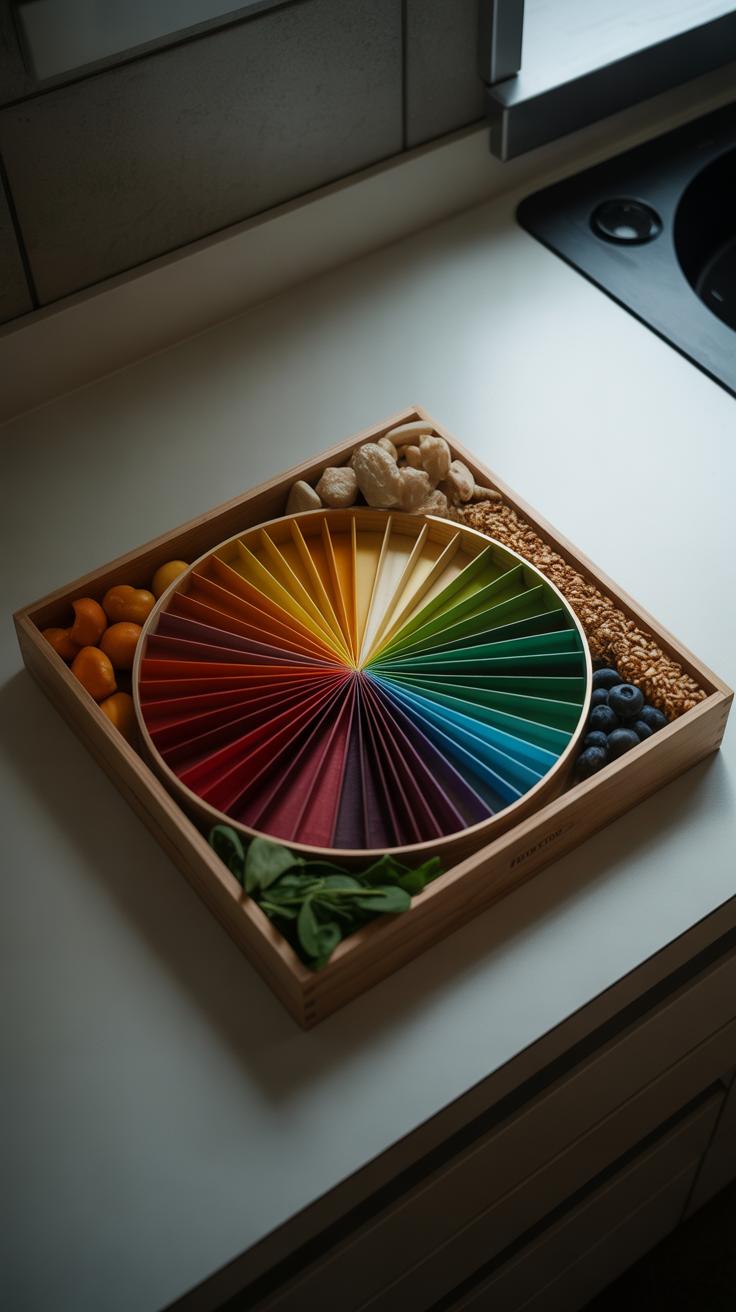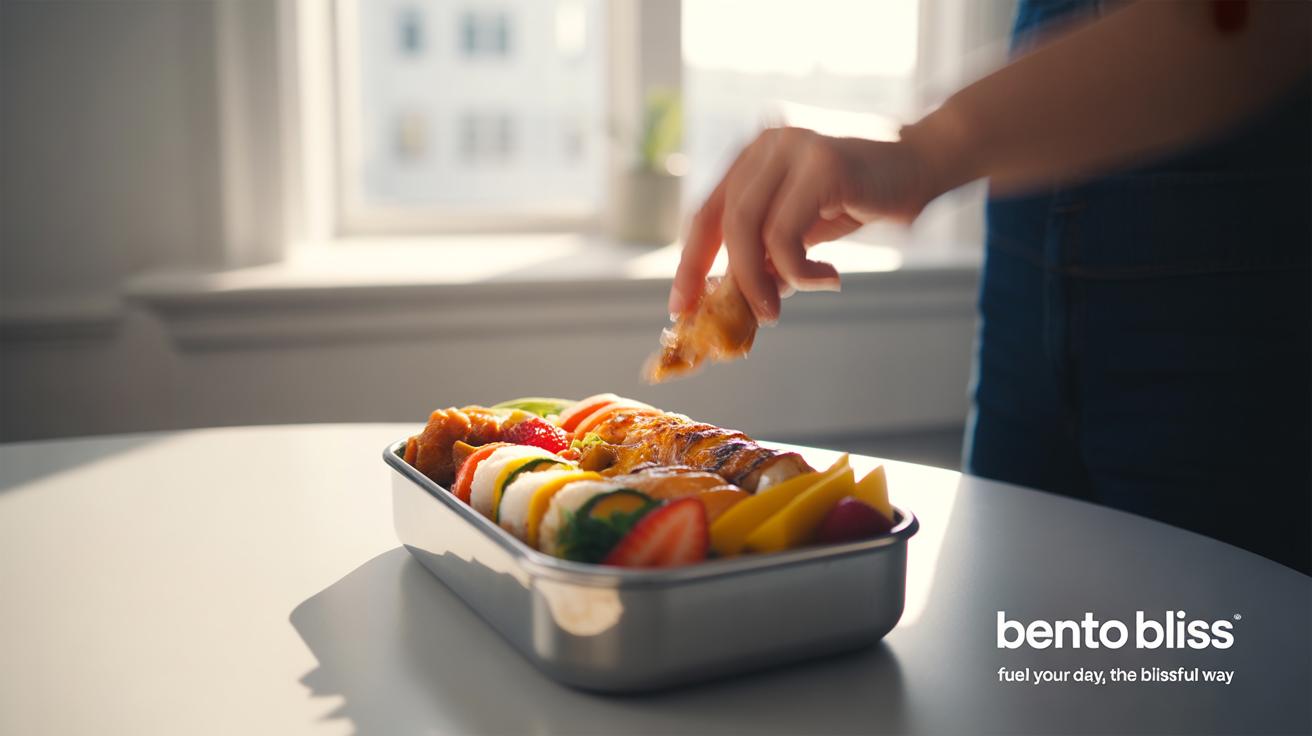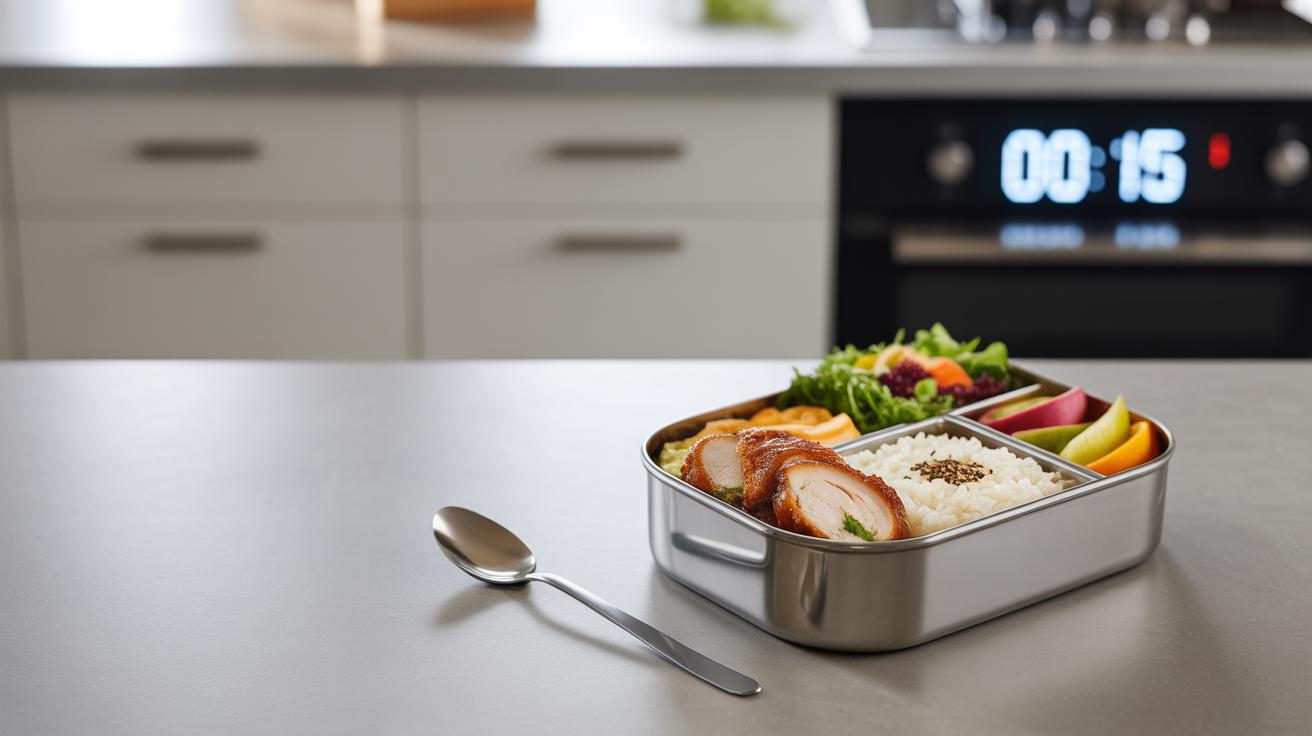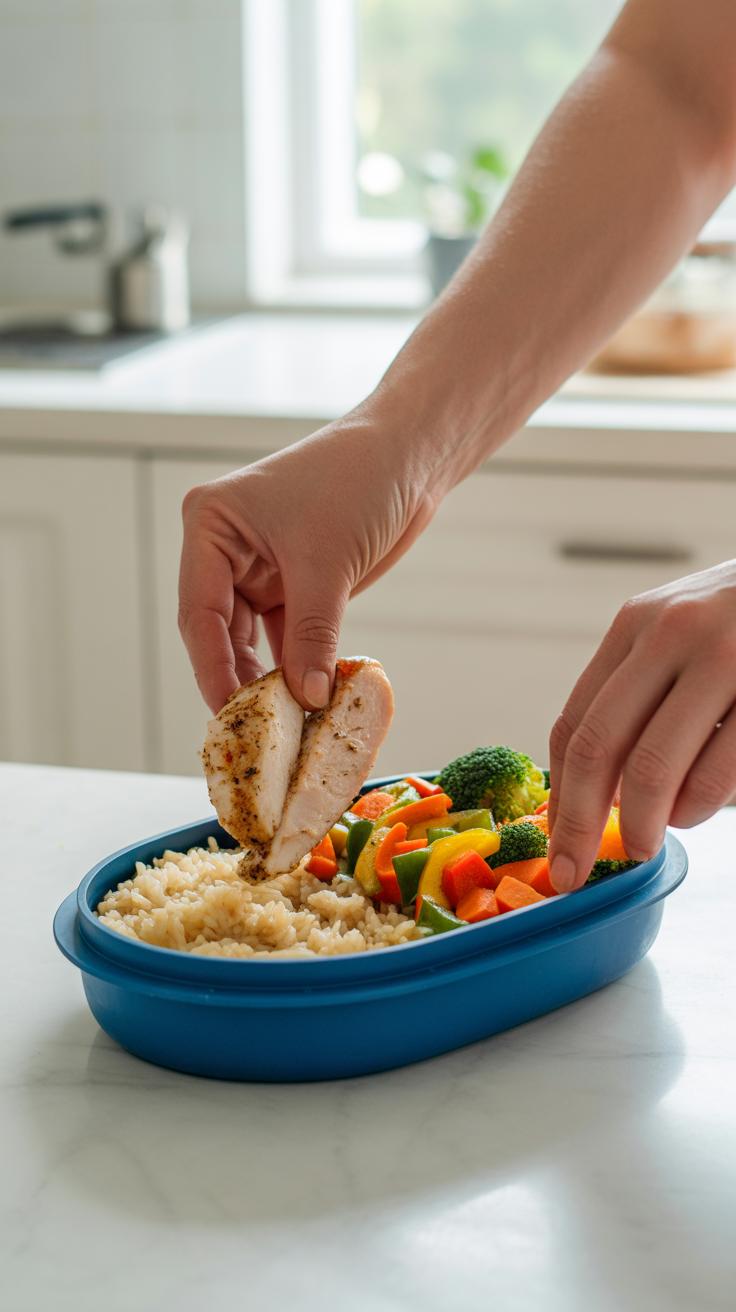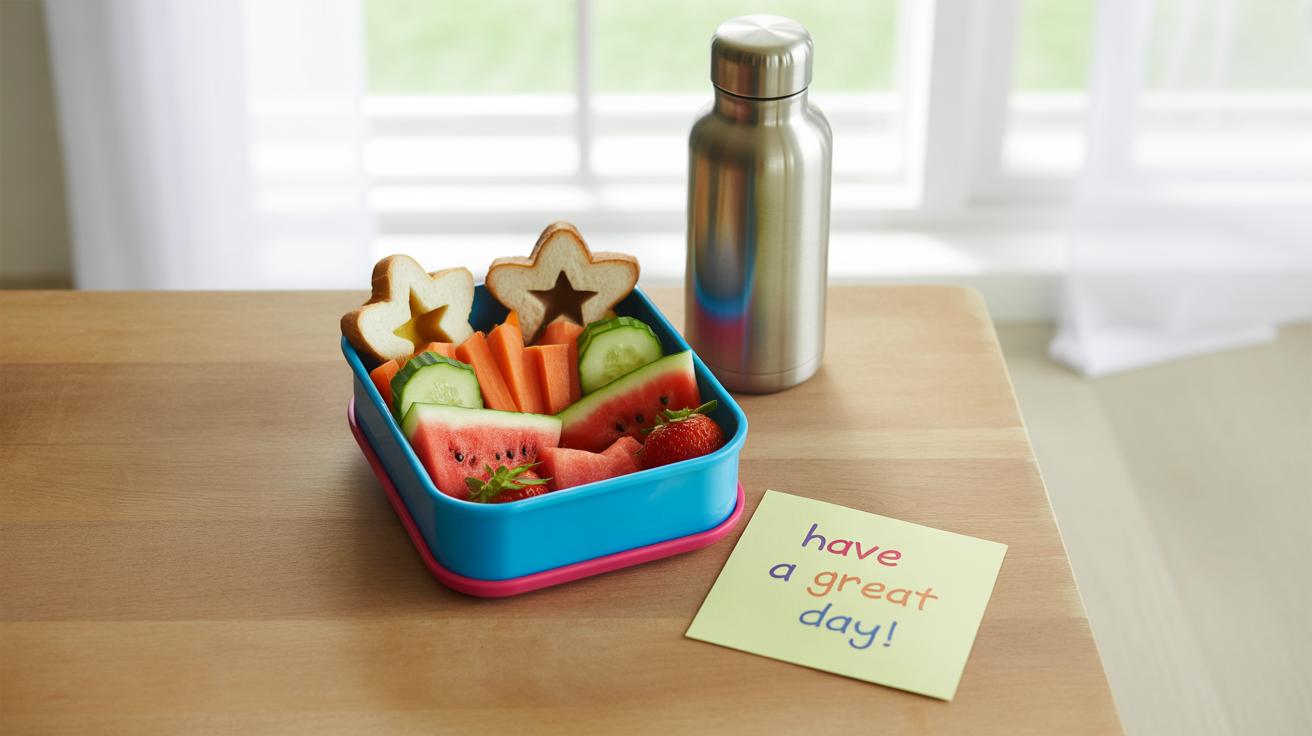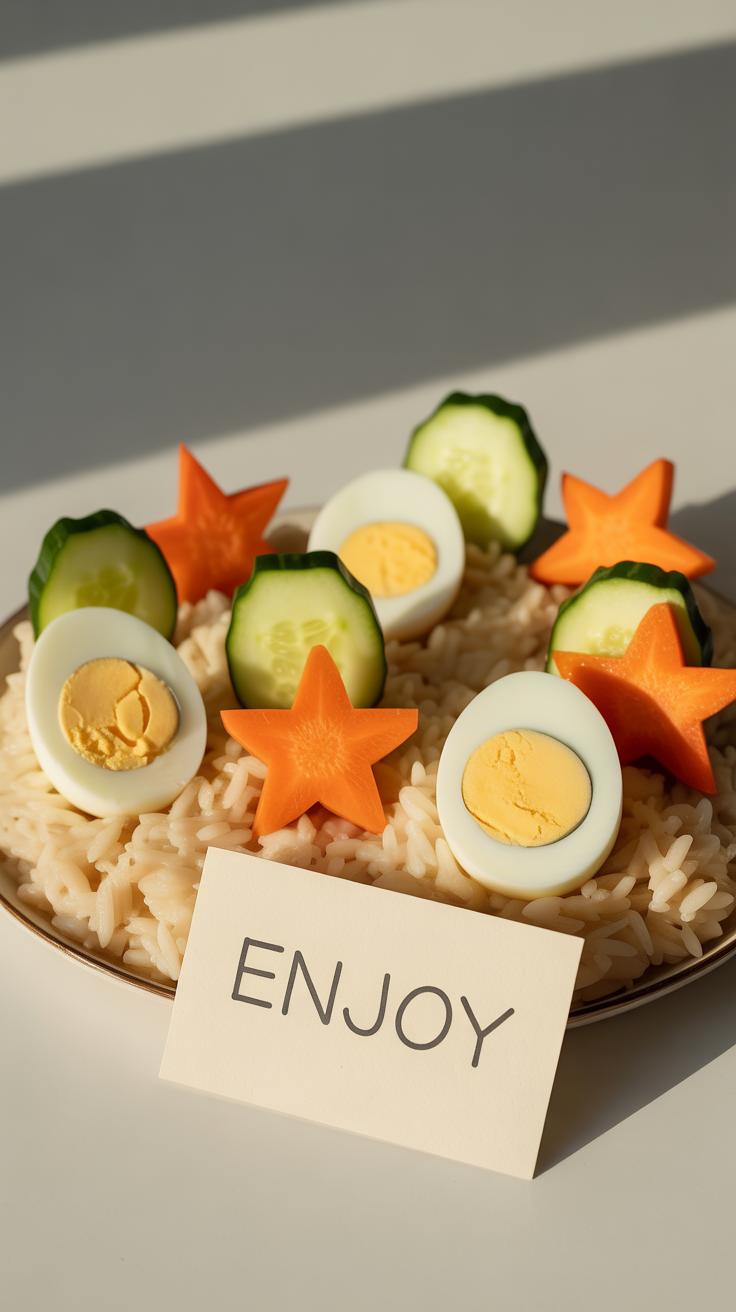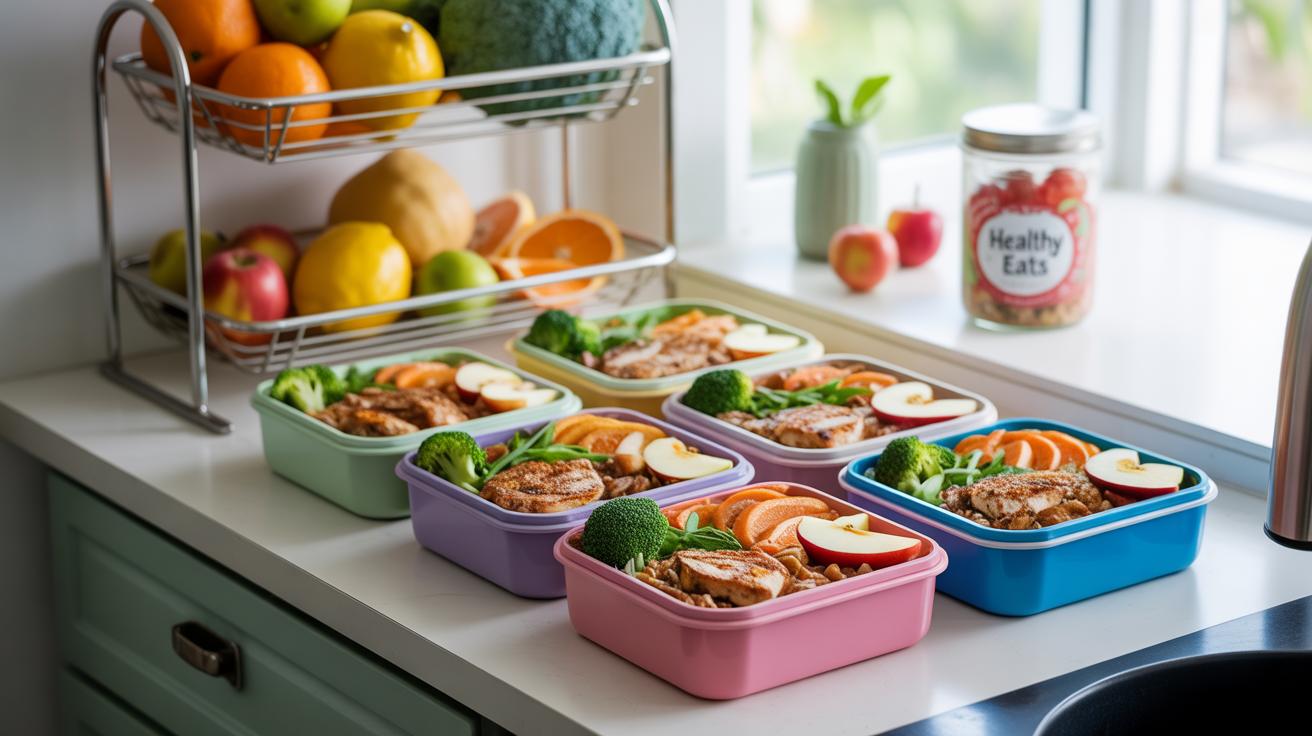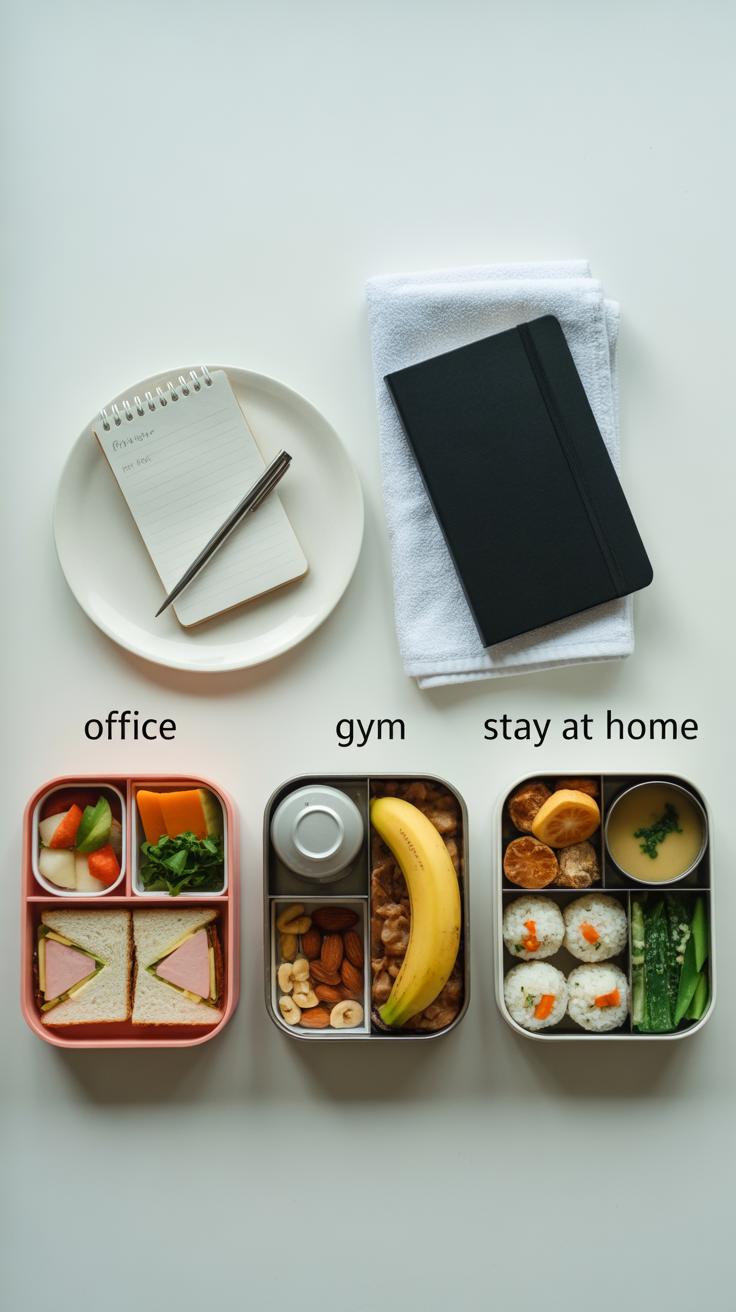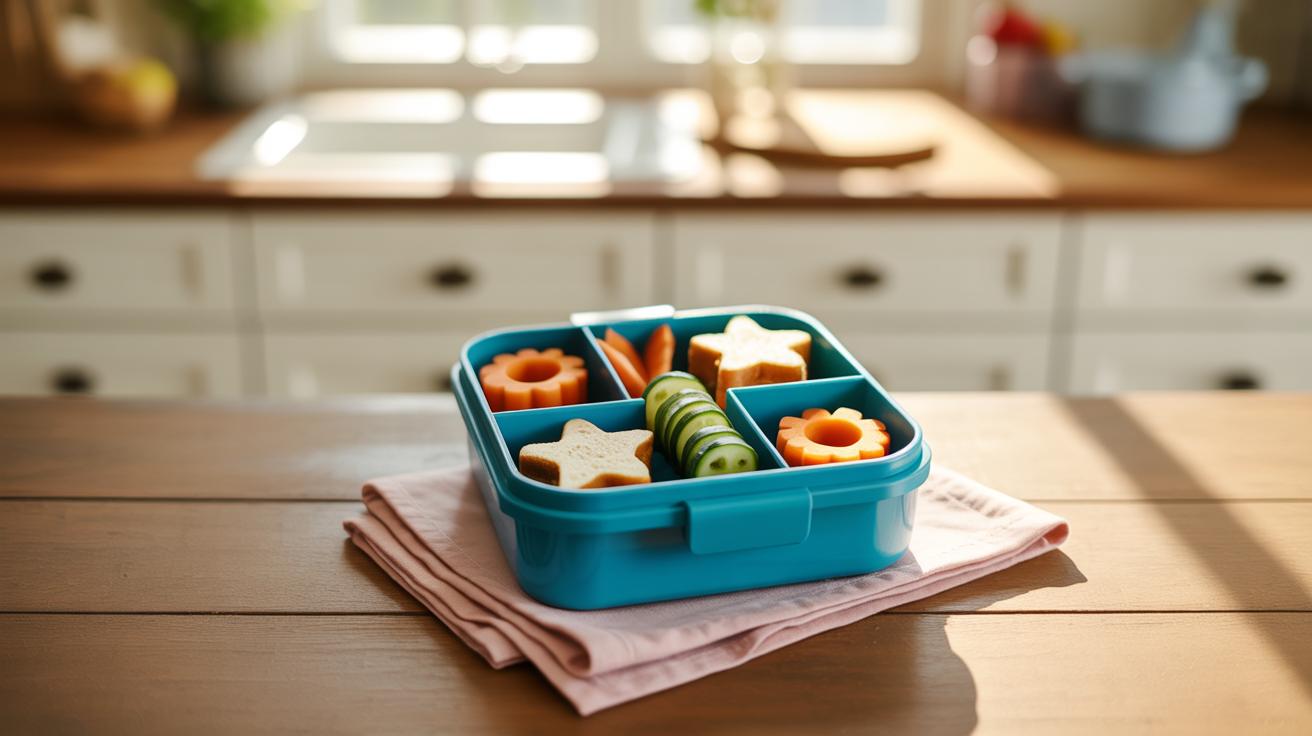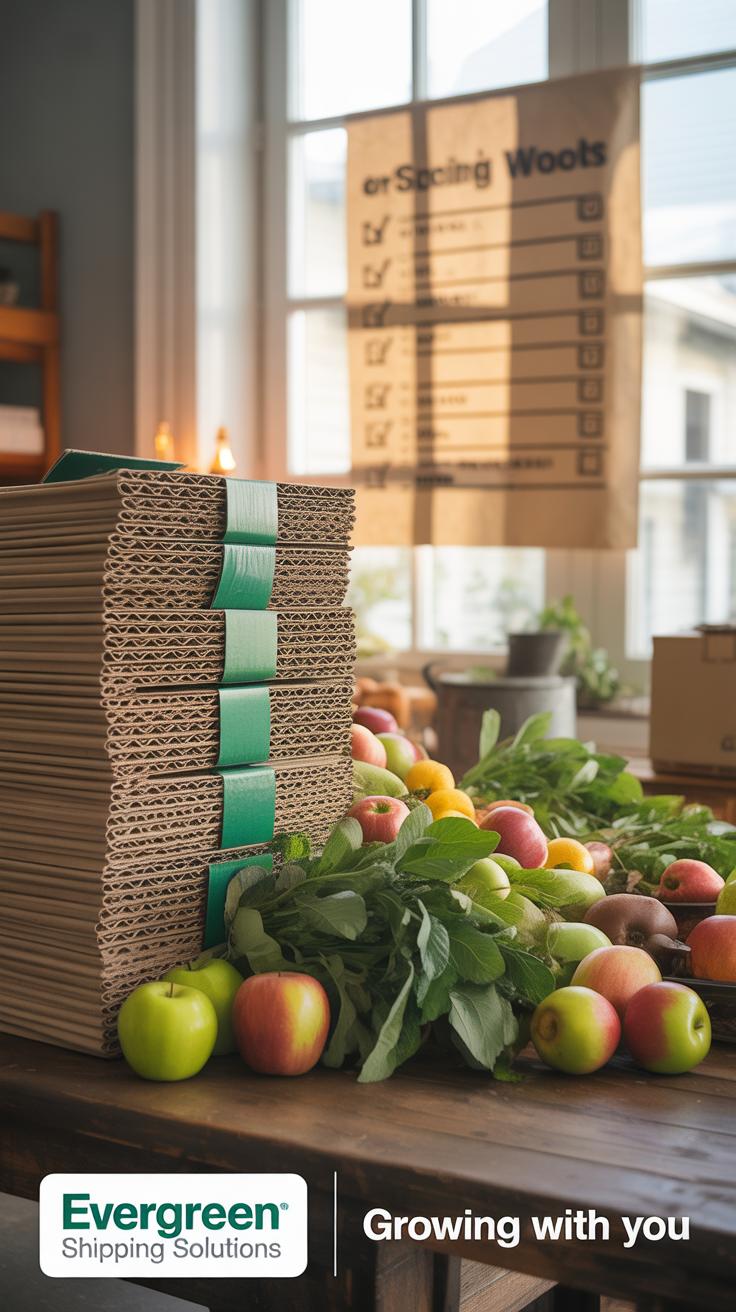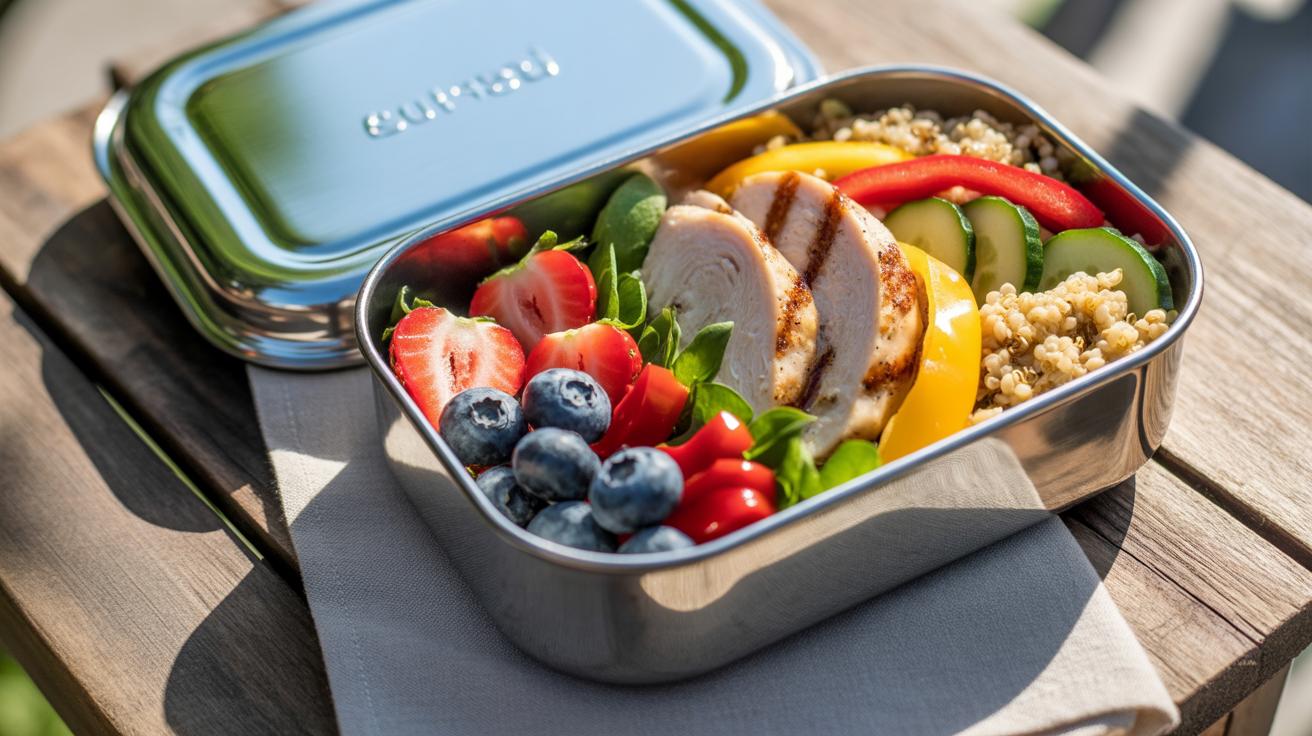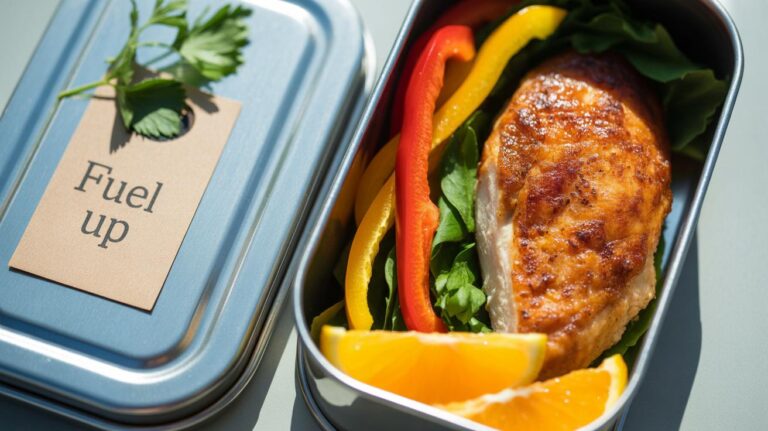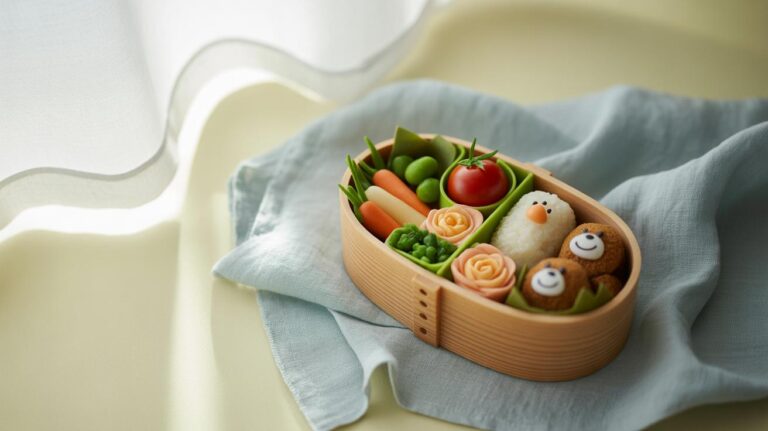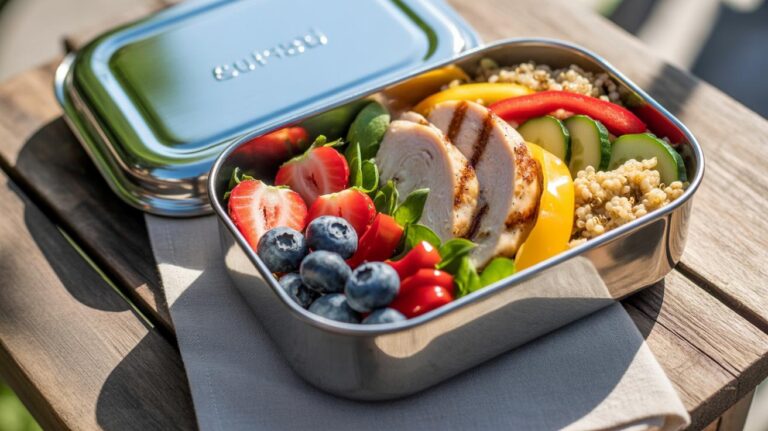Introduction
Bento is a type of Japanese lunchbox known for its convenience and balance. This article explores Japanese Food Bento Ideas For A Simple Home Lunch. You will learn about the history, components, and preparation tips to make your lunch simple and delightful.
Making a bento at home offers you a way to enjoy nutritious and visually appealing meals. With colorful ingredients and easy-to-follow steps, you can bring a taste of Japan to your lunch table each day.
Understanding Bento
History and Origin of Bento
Bento has a long history in Japan, stretching back several centuries. Originally, it started as a simple packed meal for travelers and workers in the Kamakura period, around the 12th to 14th centuries. People needed something portable and easy to eat on the go. Over time, what began as basic rice balls or dried foods evolved into more intricate and balanced meals. By the Edo period (1603–1868), bento had become more elaborate, featuring a variety of ingredients arranged neatly in compartments. This evolution shows how bento was never just about convenience; it became an expression of care and aesthetics.
What’s interesting is how bento shifted from being a rare treat or necessity for travelers to a daily staple for students, office workers, and families. The practicality combined with visual appeal makes it unique in Japanese culture. It’s not just food—it’s an opportunity to help someone feel thought of and cared for, even amidst busy days. Still, I wonder if that sense of mindfulness in bento preparation gets lost in fast-paced modern life.
What is Bento Made Of
Traditional bento meals usually contain a balance of ingredients, aiming for nutrition and variety in a compact form. At the center, there’s always steamed white rice or sometimes mixed grains. Around it, you will often find some kind of protein, like grilled fish, tamagoyaki (Japanese rolled omelet), or karaage (fried chicken). Vegetables—both pickled and cooked—fill the spaces, offering color and flavor contrast. Common choices include pickled radish, steamed broccoli, or lightly sauteed greens.
Some bento boxes have a small portion of fruit or a sweet treat to finish the meal. The goal is to have a mix of tastes and textures, so each bite feels different—sometimes soft, sometimes crunchy, sometimes tangy. The presentation matters, but practicality can’t be ignored since bento is often eaten away from home, sometimes even cold. It’s a balancing act between taste, nutrition, convenience, and appearance, all wrapped into one daily ritual. Have you ever noticed how that little detail—the shape of the rice ball or the color of a garnish—can brighten your whole lunch break?
Bento Box Basics
Types of Bento Boxes
When you start thinking about bento boxes, you quickly realize there’s quite a variety out there. Some are simple, disposable containers often used in convenience stores. You might see these plastic boxes topped with clear lids—handy if you’re in a rush but not something you’d want to invest in for every lunch.
On the other hand, reusable bento boxes come in many forms. There are traditional wooden ones, which can feel nice to hold and have a natural look, though they need a bit more care. Then you have plastic or metal boxes, often with multiple compartments to separate your rice, veggies, and protein. Some are even leakproof, which is useful if you include something with sauce.
Sizes vary too, from compact single-layer boxes to larger, multi-tiered ones that hold more food. I once bought a double-decker bento—it was great for packing a full meal but felt bulky to carry daily.
Choosing the Right Box for Your Lunch
Picking a bento box can feel a bit tricky at first. Ask yourself: how much do you usually eat? If you prefer small meals or snacks, a compact box might be enough. But if you need a full lunch to power through your afternoon, a larger box makes sense.
Think also about what you want to pack. If your lunch includes a juicy or saucy item, a leakproof design is a priority. If you want something lightweight, go for plastic over metal. And if you care about ease of cleaning, a dishwasher-safe container could save you time.
One thing I’ve noticed is that sometimes we choose boxes based on looks rather than practicality. It’s tempting to pick a cute design, but try to balance that with your real daily needs. Are you willing to spend extra time assembling and washing it? Or do you want quick convenience? The right bento box is the one you’ll actually use, day after day.
Main Ingredients for Bento
Rice and Noodles
Rice is practically the backbone of Japanese bento. It’s so common because it’s filling, versatile, and easy to prepare at home without fuss. Plain steamed rice works fine, but you can also mix in some furikake (those little seasoning sprinkles) or shape the rice into onigiri for something a bit different. Noodles, like soba or udon, often appear as a cold or warm side, wrapped in simple sauces like soy or sesame. They cook quickly and don’t usually require complicated steps. You might find yourself wondering if rice or noodles suit your mood better—both have their place and can switch up your lunch from day to day.
Proteins and Vegetables
Proteins tend to be straightforward and diverse: think grilled chicken, tamagoyaki (Japanese rolled omelet), or few slices of fried fish. Cooking methods keep things simple—grilling, pan-frying, or boiling are common. For vegetables, pick what’s fresh and easy to prepare—steamed broccoli, sautéed spinach, pickled cucumbers, or even blanched carrots. These add color, texture, and a gentle sweetness that balances the savory proteins. Sometimes, the simplest vegetable, just lightly salted or dressed, can feel surprisingly satisfying alongside the rice. You might find you prefer one veggie over others once you try several, but don’t worry if it changes often.
Balancing Nutrition in Bento
When creating a bento, striking the right balance of nutrients matters more than you might think. It’s easy to focus on taste or presentation, but your meal should also fuel you properly throughout the day. Think of your bento as a small plate that holds everything you need—protein, carbohydrates, and vegetables all have their place.
Incorporating Different Food Groups
Start with a good source of protein—this could be grilled chicken, a boiled egg, or tofu if you prefer plant-based options. Then, add carbs like steamed rice or noodles to provide energy. Don’t skip your vegetables; they bring fiber, vitamins, and color to your bento. Pick something simple like steamed broccoli or pickled carrots.
Try to mix a variety of textures and flavors too. Crunchy cucumbers alongside soft rice or savory fish with fresh greens—this kind of contrast makes eating more satisfying, and helps ensure you’re not just eating one type of nutrient.
Portion Control Tips
Portion sizes can be tricky. It might be tempting to fill every corner of your box, but smaller servings often keep you feeling fuller longer if you balance them well. Try dividing your bento box roughly into three parts—half for veggies, one quarter for protein, and the rest for carbs. It’s not a strict rule, but a helpful guide.
Also, consider using small containers or silicone cups inside your bento to manage portions and avoid mixing flavors. Sometimes, just seeing smaller amounts helps you eat less without feeling deprived. And remember, you can always add a side fruit or snack if you get hungry later.
Create your bento meals with variety in mind, and see how the balance affects your energy and satisfaction. What parts do you find yourself reaching for first? That can tell you a lot about how well your bento is working for you.
Simple Bento Preparation Ideas
Getting started with bento can feel a bit overwhelming, but it doesn’t have to be time-consuming. Think of your bento as a simple box with a few tasty and easy-to-make components. You don’t need to cook every single item from scratch. Sometimes, a well-packed store-bought tamagoyaki (Japanese omelet) or even a small portion of steamed rice with furikake (seasoned sprinkle) is enough to build around.
Some quick assembly tips: always keep small containers or silicone cups handy to separate flavors. You can toss in some cherry tomatoes, edamame, or pickled vegetables straight from the fridge. Pre-cooked chicken karaage (Japanese fried chicken) or simply grilled fish can be warmed quickly and placed in your box. When in doubt, boiled or steamed veggies with a dash of soy sauce make an easy filler.
Try to balance leftovers from dinner, too. One day, I used leftover stir-fried pork with onions, paired it with onigiri (rice balls) and a side of blanched spinach. The night before, I cut the vegetables and marinated the meat, so the morning felt much less rushed. Prepping ingredients this way—washing veggies, cooking rice, portioning proteins—saves precious time during hectic mornings. You could even set multiple bento boxes for a couple of days ahead, stored safely in the fridge.
Do you have a favorite quick lunch ingredient that works well in a bento? Sometimes, just a bit of planning helps turn an ordinary lunch into something you actually look forward to. Bento doesn’t need to be fancy or elaborate. Just simple, practical, and a little bit thoughtful—that’s enough.
Adding Fun and Creativity
Using Colors for Appetite Appeal
Colors in your bento can do more than just brighten up the box. They can actually influence how hungry you feel. Think about how a pop of red from cherry tomatoes or a splash of green from steamed broccoli draws your eye. These colors suggest freshness and variety, which makes the whole meal inviting in a way plain beige rice alone doesn’t.
Try to include multiple colors—not because it’s a strict rule, but because it naturally breaks the monotony. A little orange from carrots, yellow from tamagoyaki (Japanese rolled omelet), and purple from pickled radish can go a long way. It’s rarely about matching perfectly. Sometimes an unexpected color stands out, making the meal feel special or, well, less like just packed lunch.
Creative Arrangements
Arranging food in a bento box doesn’t need to follow a rigid pattern, but a bit of thought changes everything. For example, placing round onigiri next to crisp, rectangular tamagoyaki pieces creates contrast. Or stacking slices of cucumber in a fan shape can add a quiet elegance.
Simple tricks work well: use dividers or lettuce leaves not just to separate but to frame each section. Another idea is to play with height—layer pickled veggies under a protein for a little dimension. When foods are grouped by color or shape, your bento feels more intentional without overdoing it.
And hey, you don’t have to be an artist—sometimes just a slight tilt of a piece or an offset arrangement looks more natural and appealing than everything lined up perfectly. So, experimenting is key. What small changes make you look forward to opening your lunch box? Maybe that’s where your creativity lies.
Bento for Different Lifestyles
Adapting bento making can feel a bit tricky when your lifestyle or dietary needs don’t fit the usual mold. If you follow a vegetarian or vegan diet, for example, you might worry about missing out on variety or the satisfying nature of traditional bento staples like fish or meat. But really, it’s about shifting focus. Think tofu, seasoned beans, or grilled vegetables like eggplant and bell peppers. Natto or pickled veggies also add that salty, fermented bite that’s so satisfying. You don’t need complicated replacements—sometimes just tweaking the ingredients you already enjoy makes all the difference.
Busy days? You probably don’t want to spend much time in the kitchen, which is where quick bento prep comes in. Simple things like cooking rice in bulk, preparing onigiri ahead of time, or roasting veggies the night before can save minutes during your morning rush. Sometimes, just packing leftovers creatively is enough. One time, I used store-bought edamame and pre-cut carrots, and it made my bento packing feel far less stressful without losing charm.
When you think about it, bento should fit your rhythm. Can a box full of plant-based bites or quick-assembled treats really satisfy? I think yes, if you pay attention to texture and flavor balance. Have you tried mixing crunchy seaweed crisps with soft rice and something tangy or sweet? It’s these little touches that make all the difference. Bento’s art lies in fitting what you like into your day, not the other way around.
Sustaining Your Bento Habit
Planning Your Bento Meals
Keeping up with bento making can feel tricky at times, especially when days get busy. One thing that really helps is planning your meals ahead. This doesn’t mean you need a rigid, detailed schedule—just a simple outline or list of what you want to prepare during the week. For example, choosing a few staple proteins or vegetables that you enjoy and mixing them up in different ways cuts down on the daily guesswork.
When you plan, you save time in the mornings, which is often when motivation dips. It’s easier to pull together a bento if you know what ingredients you already have. Sometimes, I’ve found that just jotting down ideas Sunday night makes Monday’s lunchbox less of a chore and more of a small project to look forward to. Does this help you too?
Staying Inspired with New Ideas
It’s natural to hit a wall and wonder if you’ve made the same bento a thousand times. Keeping it fresh means seeking out new ideas, though it might feel overwhelming to sift through countless recipes online. Instead of trying to overhaul your routine completely, try introducing tiny twists like different seasonings or switching out one side dish.
You could also peek at Japanese cookbooks, food blogs, or social media accounts focused on bento culture. Sometimes, simply seeing colorful arrangements or unusual ingredient combinations sparks creativity unexpectedly. Sharing your own bento photos or swapping ideas with friends can add a bit of fun too—and maybe some gentle accountability to keep you going.
What’s one small change you could try next time? Even slight variations might make a big difference in how you enjoy your daily bento experience.
Conclusions
You now have a clear understanding of what a bento is and how to prepare one for your home lunch. Bento offers a convenient and healthy way to organize your meal. You can use different ingredients to keep your lunch interesting and delicious.
Try combining the ideas shared here and practice making your bento. It’s not just about food; it’s about enjoying the process and sharing a bit of Japanese food culture in your everyday life. Bento can make your lunch simple, fun, and nourishing.

